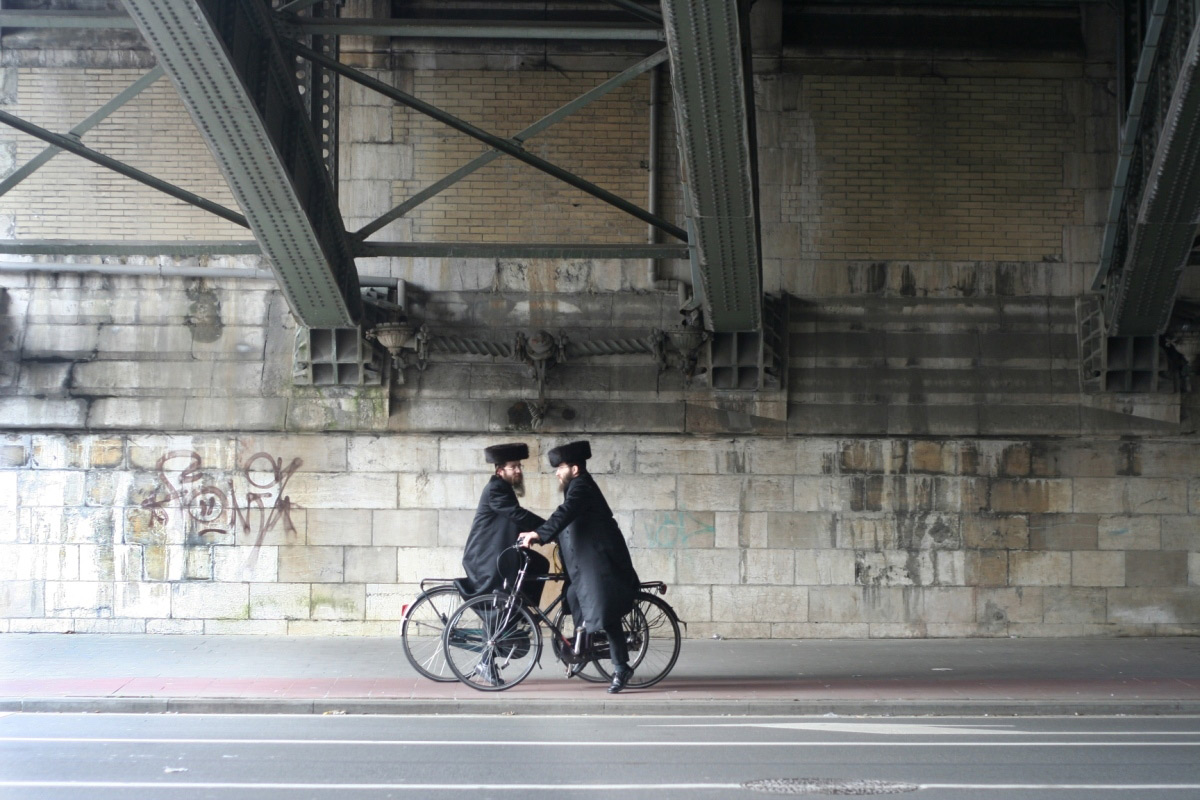Two Hasidic men on their bikes, stopping under the railroad bridge to chat: this is an everyday scene in Antwerp, especially in the neighborhood close to the central railway station and the diamond district. Within this so-called Jewish neighborhood lives a high concentration of Antwerp's (mainly) Orthodox Jewish population, along with non-Jewish inhabitants.
Since the end of the nineteenth century the number of Jews in Antwerp has risen considerably (ca. 1,200 in 1880 to 35,500 in 1939). The diamond trade, which expanded parallel with the influx of Jewish immigrants, attracted a rising number of Jewish newcomers and became the economic motor of Jewish life in the city. When things went well in diamonds, Jewish life flourished. But when the diamond business entered periods of crisis, Jewish institutions and organizations were the first to notice and be affected. Jews occupied key positions in the management of the diamond industry and newcomers could advance far within it, often in a relatively short time. All sorts of Jewish life - Orthodox, Zionist, Communist, Socialist, etc. - were visible around the diamond district and the adjacent Jewish neighborhood.
The Second World War and the persecution and annihilation of Jews devastated Antwerp's Jewish life. Approximately 65 percent of Antwerp's registered Jewish population was deported, and few survived. Just before and during the war a considerable number of people in the diamond sector fled the country. The major destinations for this resultant diamond diaspora were London, New York, and South America. That Jewish life exists today in Antwerp has much to do with the wartime preparations of the former Antwerp mayor and two Jewish diamond merchants in exile in London. They began planning for the diamond industry's return to Antwerp already during the war. With the eagerness and the efforts of the Belgian and local Antwerp authorities, they were able to convince this mainly Jewish diamond diaspora to return to the city.
The diamond sector in particular offered jobs that were compatible with the various demands of Orthodox religious life. Major diamond traders and employers, even if not highly observant, generally afforded deep respect to Jewish religious practices and customs, especially after the Holocaust. This element of the industry enhanced the city's attraction for Orthodox newcomers, especially among the most strictly Orthodox. The latter included many Hasidic groups, whose public presence in the city grew increasingly visible in the post-war decades. By the 1950s the percentage of Jews who worked in diamonds and the percentage of Jewish children who attended Jewish day schools were both estimated at about 80%. Such cohesion remains high today, and the percentages for education remain comparable. Nonetheless, the decline in Antwerp's diamond sector brings into question whether the Orthodox Jewish community will be able to reorient itself economically and thus whether Antwerp will remain the remarkable center for Orthodox (and ultra-Orthodox) Jewish life that it has been in post-war Western Europe.
